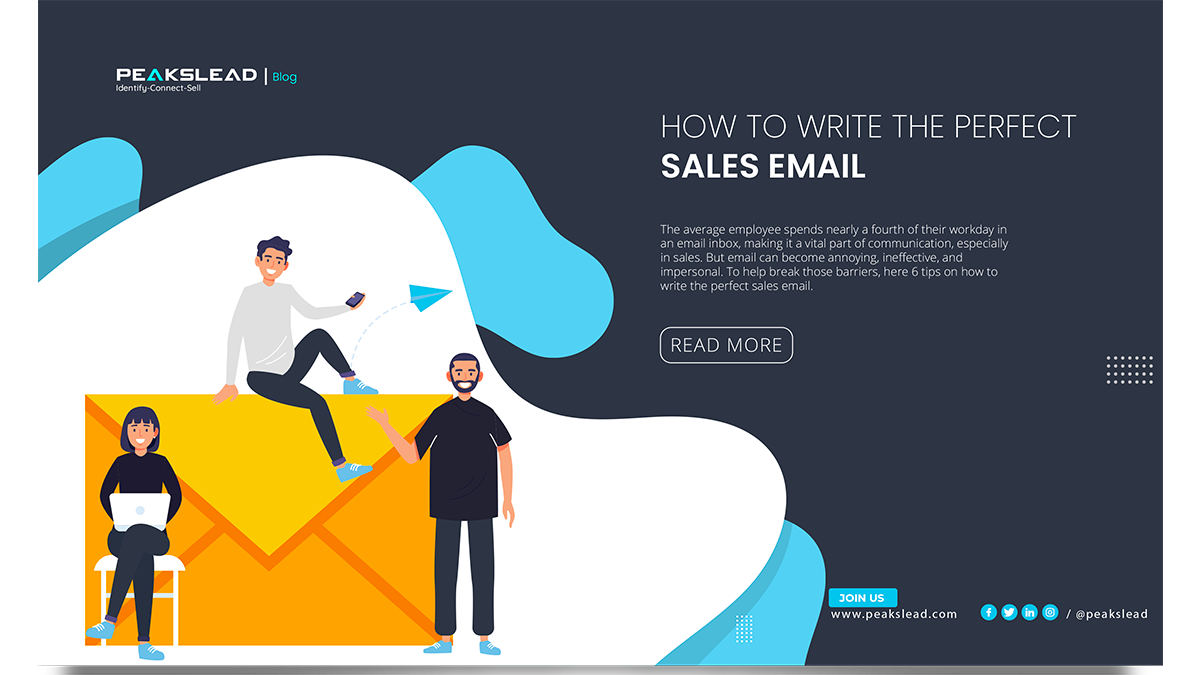
The average employee spends nearly a fourth of their workday in an email inbox, making it a vital part of communication, especially in sales. But email can become annoying, ineffective, and impersonal. To help break those barriers, here 6 tips on how to write the perfect sales email.
1. Keep Your Sales Email Short & Sweet
Writing a long sales email can be detrimental, causing prospects to delete or ignore it. The key is to write emails that are simple and to the point. If your email requires constant scrolling, there’s a good chance it will end up in the trash.
While your sales emails should be short, they should also be clean and neat. Always make sure you check for quality control! Try a tool like Grammarly to avoid costly spelling errors.
Try viewing it on a smartphone screen too, since it’s very likely that it could be opened on a mobile device.
2. Always Include a Call to Action
If you’re writing a sales email to a prospect, chances are you are expecting something from them. Ask yourself a few questions while drafting your email – why are you sending this email? What is your expected outcome?
If you are looking to schedule a meeting, suggest a specific date and time, including helpful details like the meeting duration.
“I would love to set up 30 minutes to show you how we can help you get more qualified leads. How’s Thursday at 10 a.m?”
3. Don’t Be Afraid to Give Deadlines
If you are expecting a response in regards to a proposal, give a deadline. Of course, do it tastefully. Don’t make it seem like an ultimatum. You want to yield some sense of urgency while adding some friendly pressure to ensure the process moves forward.
Try something like this:
“Here’s our proposal based on the details we discussed today. These terms are valid until EOD Friday. I look forward to hearing from you before then.”
4. Use New Technology to your Advantage
There are many new sales technologies available to make email communication more efficient. Email trackers can help salespeople determine sales email effectiveness as well as learn the habits of potential clients.
Let’s say you sent a proposal to a prospect via email. With an email tracker, you can see whether that email has been opened and the type of activity it might be generating – was it opened several times? Forwarded to co-workers? Viewed in various cities?
Without an email tracker, you’ll never know the activities your email triggered. An email tracker can also alert you to a good time to send a follow-up email, or give them a call since people generally check their email around the same time every day.
Alternatively, you can use borrowed data for best practices. Companies such as MailChimp have done wonderful research on sales email benchmarks that can get you heading in the right direction.
5. Personalize Your Damn Sales Emails!
Don’t be a robot. Don’t be lazy. Do the work, and learn something about your prospect! Stalk them on social media to find something they’ve recently tweeted. Search their company name in the news to see if there’s anything you can mention to show that you’ve done your research.
When emailing a prospect about your product or service, it’s important to ensure that your email does not share the same information easily accessible via your company’s website.
Instead, focus on the unique value that your product or service can solve for the company you are targeting.
Include a stat or two detailing the positive results that current customers have seen using your product or service to create a more compelling argument.
By going the extra step to create a more personalized email, you have a much better chance of connecting with your prospects.
6. Take it Beyond the Inbox
The sales process often follows an “email first, call second” process. As a salesperson, email should be used to generate interest, coordinate meetings, and deliver proposals. However, email is not appropriate for the actual selling – that should be done over the phone or in person.
Your initial interaction over email should be enticing enough to get a prospect on the phone or to schedule an in-person meeting, where you can delve into a deeper sales conversation about the specifics of your product or service.
Recap
Aside from all the advice above, your email should have 3 simple sections.
- The Intro – Don’t blow it here. The subject and the first few sentences have to be an attention grabber. It’s the difference between getting opened versus getting ignored or blocked.
- The Value Proposition – Main point of your email. Keep it focused on value, and solving a problem for your prospect. Why should they care about you? If there is a clear and concise benefit to the prospect, you’ll get a response. If not, you’re dead to them.
- Call to Action – This goes without saying, this is the crucial point where you tell the recipient exactly what you want them to do. As you’d expect, this can make or break everything.
Get in the driver’s seat and Connect with potential customers with PeaksLead.






Follow Us On